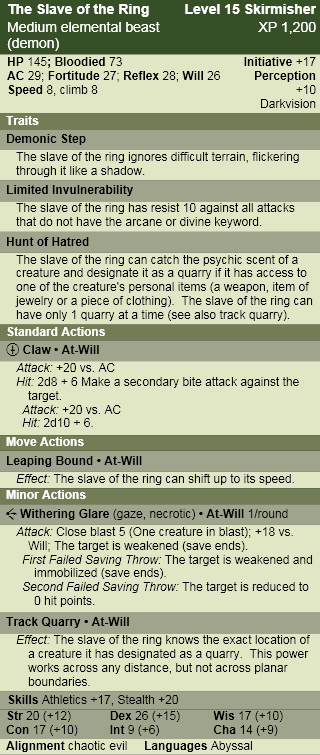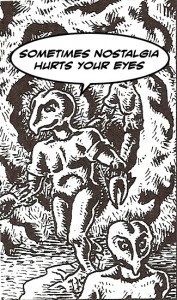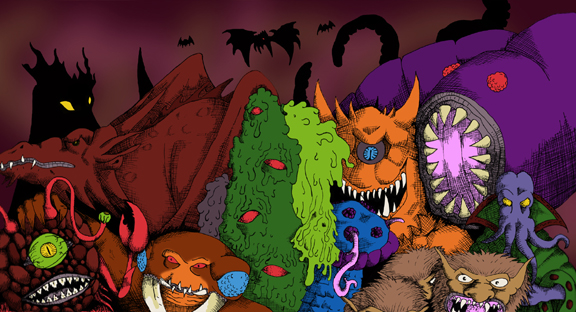For Monsters of the Hyborian Age, I’m going to be covering the stories in the Complete Chronicles of Conan in publication order (coincidentally the order that they appear in the book) rather than the chronological order of Conan’s life. There are a few reasons for this. The first is that the chronological order is highly contested; with at least 3 different versions (I’m partial to Dale Ripkke’s). The second reason is that publication order is probably the order that they were intended to be read (imagine watching all 6 Star Wars films in chronological order – all of the anticipation and mystery of the original trilogy would make no sense). Finally, like the ‘Bond rule’ (the first actor you see playing Bond is the one whom you feel portrays him best), this is the order that I read them in so it subjectively just feels right to me.
Spoiler Alert! All of these Hyborian age posts are going to be filled with spoilers. From the summary, to the monster stats they are going to ruin any surprises as to what the monster is, when they pop up in the story and how and why they are killed. You’ve been warned.
Summary
The first Conan story, oddly enough, begins with the barbarian towards the end of his career. He is middle-aged and has become king by his own hand over the most powerful nation in the world, Aquilonia. But it is not an easy rule. A group of four influential conspirators works behind the scenes to end the new king’s rule and replace him with one of their own. While Conan was first hailed as a savior for killing the tyrant Numenides, the public (encouraged by the ‘rebel four’) chafes at being ruled by a foreigner. To this end the rebel four uses Ascalante, a deposed nobleman and his slave Thoth-Amon, once a powerful Stygian wizard, but bereft of magic since the loss of his powerful ring.
The rebel four plans on assassinating Conan with their own hands while he is defenseless. As the tangled conspiracy unfolds we learn that Ascalante plots against the rebel four even while he helps them, hoping to betray them at the last moment. Likewise his slave, Thoth-Amon plots against his master for the humiliation he has suffered at Ascalante’s hands.
While the rebel four and Ascalante put their plan into motion, fate deals two wild cards. First Thoth-Amon finds his magic ring and uses it to summon a powerful demon to track down and destroy Ascalante. Second, Conan is visited in a dream by the ghost of the sage Epemitreus who warns him of the im pending assassination and imprints his sword with the mystical symbol of the phoenix.
pending assassination and imprints his sword with the mystical symbol of the phoenix.
All threads come together in the king’s bedchamber as Ascalante and the rebel four find Conan awake and ready for them. Before battle can be joined Thoth-Amon’s demon enters the fray, destroying the would-be assassins and attacking Conan. Using his now magical sword, the king is able to slay the unstoppable beast and send it back to the abyss.
The Slave of the Ring
“Its outline was not unlike that of a gigantic baboon, but no such baboon ever walked the earth, not even in Stygia… The hideousness of its face transcended mere bestiality. It might have been the face of an ancient, evil mummy, quickened with demoniac life. In those abhorrent features the outlaw’s dilated eyes seemed to see, resemblance to the slave Thoth-Amon. Then Ascalante’s cynical and all-sufficient philosophy deserted him, and with a ghastly cry he gave up the ghost before those slavering fangs touched him.”
-Robert E. Howard, the Phoenix on the Sword
Arcana DC 20: The slave of the ring is a shadowy demon bound to a mystical talisman dedicated to the Stygian god, Set. Brought forth from the ring by means of a foul ritual, the demon serves its master as a peerless tracker and assassin.
Arcana DC 25: Woe to anyone who meets the slave of the ring’s terrible gaze, for its swirling yellow orbs have the power to shrivel a mortal’s soul in their baleful radiance.
The Slave of the Ring in Combat
Once the slave of the ring has its target’s psychic scent it is nearly impossible to evade. The demon stalks its prey, waiting until its target is distracted (typically in combat) to strike. It takes full advantage of its advanced mobility, skirting around defenses and rending softer opponents with their deadly talons.
Encounters
The slave of the ring is conjured into the world at the behest of its master, usually a powerful Wizard, Warlock, or Cleric (Yaun-Ti spellcasters favor the summoning of the slave of the ring to dispatch political opponents). Such a master might send other servants to accompany the demon (usually skirmishers or lurkers) or attend personally to ensure it fulfills its task.
Notes
When Conan fights the slave of the ring, he feels more like an upper Paragon tier character rather than an epic one (becoming king by your own hand feels more ‘paragon path’ than ‘epic destiny’), so I chose to make the creature a level 15 challenge. The demon’s limited invulnerability trait is meant to emulate its resistance to normal weapons and its vulnerability to Conan’s enchanted blade. I wanted to play around with power sources, since I haven’t really seen anything that makes use of those keywords. If there are a lot of PC’s in the party with these power sources you should probably increase the resistance to 15. If there are few PC’s you might want to place a magic weapon in the adventure with a trait that makes all attacks with it have the arcane or divine keyword (inscribed with a phoenix of course).




